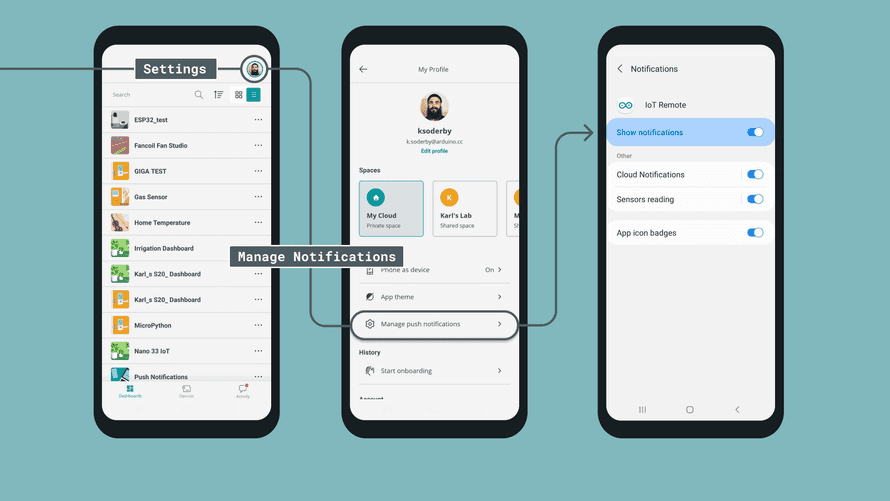Unlocking The Power Of Remote Execute Job IoT: Revolutionizing The Future Of Connectivity
Remote execute job IoT is transforming industries by enabling seamless connectivity and automation. Imagine controlling machinery, monitoring systems, and executing tasks from anywhere in the world. Sounds futuristic? It's already here! IoT technology has bridged the gap between physical devices and digital networks, creating a world where remote operations are not just possible but efficient and cost-effective.
In today's fast-paced world, businesses are always on the lookout for innovative solutions to enhance productivity and reduce operational costs. Remote execute job IoT is at the forefront of this technological revolution, offering a flexible and scalable solution for managing and automating tasks. From manufacturing plants to smart homes, the applications of IoT in remote execution are vast and varied.
But what exactly is remote execute job IoT, and how does it work? In this comprehensive guide, we'll delve deep into the world of IoT-enabled remote execution, exploring its benefits, challenges, and future possibilities. Whether you're a tech enthusiast, a business owner, or simply curious about the latest advancements in technology, this article has something for everyone.
Read also:Ash Kash Erome The Ultimate Guide To His Life Career And Legacy
Table of Contents
- What is Remote Execute Job IoT?
- How Remote Execute Job IoT Works
- Benefits of Remote Execute Job IoT
- Challenges in Remote Execute Job IoT
- Applications of Remote Execute Job IoT
- Security Considerations
- Remote Execute Job IoT in Smart Cities
- Future of Remote Execute Job IoT
- Tips for Implementing Remote Execute Job IoT
- Conclusion
What is Remote Execute Job IoT?
Remote execute job IoT refers to the ability to control and execute tasks on devices connected to the Internet of Things (IoT) network from a remote location. Simply put, it allows you to manage and operate IoT-enabled devices without being physically present. This technology leverages sensors, actuators, and communication protocols to facilitate seamless interaction between devices and users.
Key Components of Remote Execute Job IoT
- Devices: These include sensors, cameras, and other IoT-enabled gadgets.
- Network: A stable and secure internet connection is crucial for remote execution.
- Software: Specialized software platforms are used to manage and monitor remote devices.
- Cloud: Cloud computing plays a vital role in storing and processing data generated by IoT devices.
Understanding the components of remote execute job IoT is essential for businesses looking to implement this technology. Each component works together to create a robust and reliable system for remote operations.
How Remote Execute Job IoT Works
The process of remote execute job IoT begins with the collection of data from IoT devices. These devices are equipped with sensors that gather information about their environment, such as temperature, humidity, and motion. The data is then transmitted to a central server or cloud platform for processing and analysis. Based on the insights derived from the data, commands can be sent back to the devices to execute specific tasks.
Step-by-Step Process
- Data Collection: IoT devices collect real-time data from their surroundings.
- Data Transmission: The collected data is sent to a central server or cloud platform.
- Data Processing: The data is analyzed to identify patterns and trends.
- Task Execution: Commands are sent to the devices to perform predefined tasks.
This process ensures that remote execute job IoT is not only efficient but also highly accurate, making it ideal for a wide range of applications.
Benefits of Remote Execute Job IoT
Remote execute job IoT offers numerous advantages that make it an attractive solution for businesses and individuals alike. Some of the key benefits include:
Increased Efficiency
By automating tasks and enabling remote control, IoT technology significantly improves operational efficiency. Businesses can reduce downtime and increase productivity by monitoring and managing their systems in real-time.
Read also:Jb Mauney Net Worth 2024 A Deep Dive Into The Bull Riding Legendrsquos Fortune
Cost Savings
Implementing remote execute job IoT can lead to substantial cost savings. With the ability to monitor and control devices remotely, companies can minimize the need for on-site personnel, reducing labor costs.
Enhanced Flexibility
IoT-enabled remote execution provides unparalleled flexibility. Users can access and control their devices from anywhere in the world, as long as they have an internet connection. This flexibility is particularly beneficial for businesses with operations in multiple locations.
Challenges in Remote Execute Job IoT
While remote execute job IoT offers numerous benefits, it also comes with its fair share of challenges. Some of the common challenges include:
Security Risks
IoT devices are vulnerable to cyberattacks, making security a top concern for businesses implementing remote execute job IoT. Ensuring the security of data and devices is crucial to prevent unauthorized access and potential data breaches.
Interoperability Issues
Different IoT devices often use different communication protocols and standards, making it challenging to create a unified system. Addressing interoperability issues is essential for seamless integration and operation of IoT devices.
Scalability Concerns
As businesses grow, so does the number of IoT devices they need to manage. Ensuring that the remote execute job IoT system can scale to meet increasing demands is a critical consideration.
Applications of Remote Execute Job IoT
Remote execute job IoT has a wide range of applications across various industries. Some of the most prominent applications include:
Smart Manufacturing
In the manufacturing sector, IoT-enabled remote execution allows companies to monitor production lines, automate processes, and optimize resource utilization. This leads to increased efficiency and reduced costs.
Healthcare
In healthcare, remote execute job IoT enables doctors and healthcare professionals to monitor patients remotely, manage medical devices, and provide timely interventions. This improves patient outcomes and enhances the quality of care.
Agriculture
IoT technology is revolutionizing agriculture by enabling farmers to monitor soil conditions, control irrigation systems, and optimize crop yields. Remote execute job IoT plays a crucial role in making agriculture more sustainable and efficient.
Security Considerations
Security is a critical aspect of remote execute job IoT. With the increasing number of connected devices, the risk of cyberattacks also rises. To mitigate these risks, businesses must adopt robust security measures, such as:
- Encryption: Encrypting data to prevent unauthorized access.
- Authentication: Implementing strong authentication mechanisms to verify user identities.
- Regular Updates: Keeping software and firmware up to date to address security vulnerabilities.
By prioritizing security, businesses can ensure the safe and secure operation of their IoT-enabled systems.
Remote Execute Job IoT in Smart Cities
Smart cities are leveraging remote execute job IoT to enhance urban living. From smart traffic management to energy-efficient buildings, IoT technology is transforming the way cities operate. By enabling remote control and automation, smart cities can improve resource management, reduce environmental impact, and enhance the quality of life for their residents.
Key Features of Smart Cities
- Smart Transportation: IoT-enabled traffic management systems reduce congestion and improve travel times.
- Energy Management: Remote execution of energy-efficient systems helps reduce energy consumption and costs.
- Public Safety: IoT devices enhance public safety by enabling real-time monitoring and response to emergencies.
Smart cities are a testament to the transformative power of remote execute job IoT, showcasing its potential to create a better future for urban dwellers.
Future of Remote Execute Job IoT
The future of remote execute job IoT looks promising, with advancements in technology driving innovation and expansion. As more devices become connected, the possibilities for remote execution grow exponentially. Emerging technologies such as 5G, artificial intelligence, and edge computing are set to enhance the capabilities of IoT-enabled systems, making them faster, smarter, and more efficient.
Trends to Watch
- Edge Computing: Processing data closer to the source reduces latency and improves response times.
- AI Integration: Artificial intelligence enhances the decision-making capabilities of IoT systems.
- 5G Connectivity: The next-generation network provides faster and more reliable connectivity for IoT devices.
These trends are paving the way for a future where remote execute job IoT is an integral part of everyday life, transforming industries and revolutionizing the way we live and work.
Tips for Implementing Remote Execute Job IoT
Implementing remote execute job IoT requires careful planning and execution. Here are some tips to help you get started:
Define Clear Objectives
Before implementing IoT technology, it's essential to define clear objectives and identify the specific problems you want to solve. This will help you choose the right devices and platforms for your needs.
Choose Reliable Partners
Partnering with reputable IoT solution providers ensures that you have access to the latest technology and expert support. Look for partners with proven track records and strong customer reviews.
Focus on Security
Security should be a top priority when implementing remote execute job IoT. Invest in robust security measures to protect your data and devices from potential threats.
Conclusion
Remote execute job IoT is revolutionizing the way we interact with technology and the world around us. By enabling seamless connectivity and automation, IoT technology offers numerous benefits, including increased efficiency, cost savings, and enhanced flexibility. However, it also presents challenges that must be addressed to ensure its successful implementation.
As we look to the future, the potential of remote execute job IoT is limitless. With advancements in technology and increasing adoption, IoT-enabled systems will continue to transform industries and improve our quality of life. So, whether you're a business owner or a tech enthusiast, embracing remote execute job IoT is a step towards a smarter, more connected future.
What are your thoughts on remote execute job IoT? Share your experiences and insights in the comments below. And don't forget to check out our other articles for more exciting updates on the world of technology!



